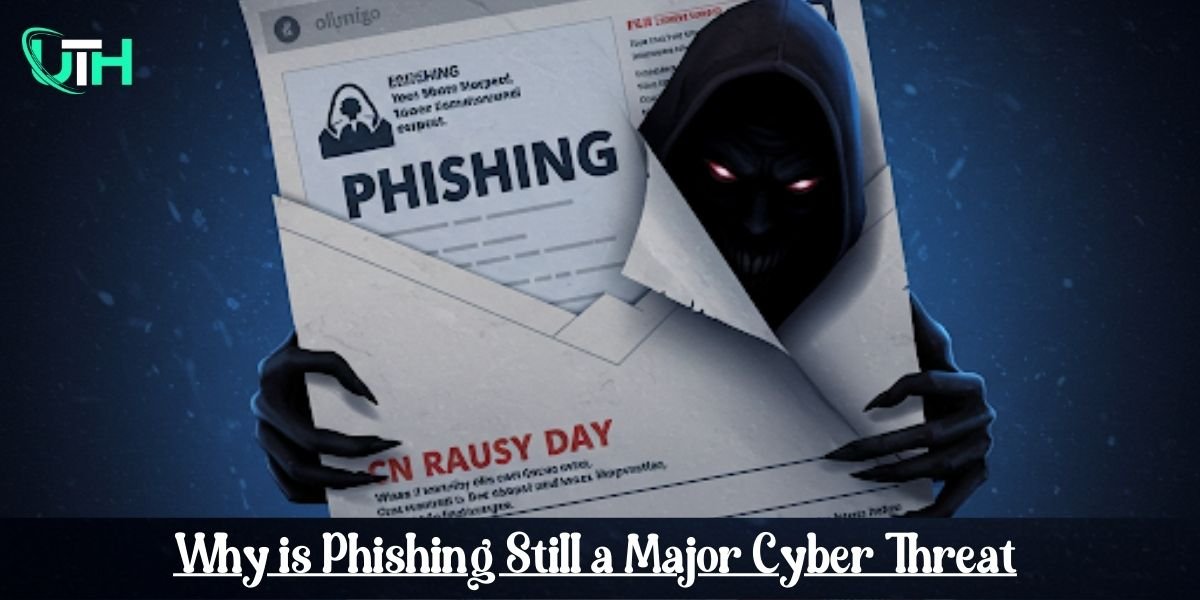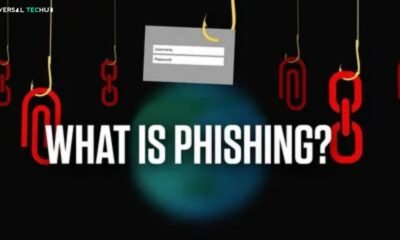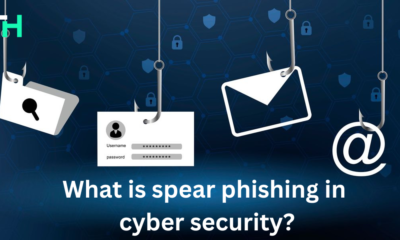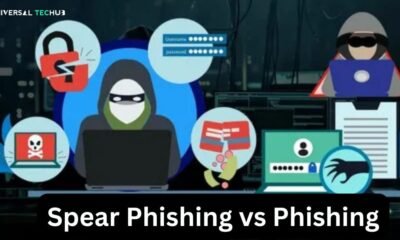Phishing attack
Why is Phishing Still a Major Cyber Threat? Everything You Need to Know

Have you ever received an email that looks familiar with your company template but has a different email address? Or some websites that look exactly the same as Facebook or any other social media network but have a different name. All these types of fraudulent redirects are phishing attempts that target your credentials for unfair use. It is one of the most common attacks in the cyber world which deceives individuals to reveal their information.
Phishing attack volumes were expected to drop with new technology and human digital acceptance worldwide. But the trends are totally different as Q3 2024 saw 932,923 phishing attempts, a 4% rise from the second quarter of 2024. This shows that Phishing techniques are getting revamped with time and it is still a major threat for businesses and individuals.
This blog will cover phishing in detail, from the basics to modern-day tactics. It will also guide you on how to stay safe from cyberattacks in 2025 and beyond.
What is Phishing?
Simply phishing is a social engineering attack that attackers use to lure users into their traps by mimicking a trustworthy identity. According to the 2025 phishing trend report, Microsoft is the top company that attackers use as a spoof to trick people globally. In this process, the attackers use a fake email a message, or even a website to make the person trust the platform. The goal is to harvest their credentials such as passwords, and credit card details, or in most cases install malware on the victim’s device. This causes a leakage of data which leads to financial and personal loss. Here is one common phishing page that seems legit and a replica of Microsoft’s login page.
Types of Phishing in the Era of AI
Phishing has evolved with new technology making it much more difficult to track and identify a cyber attack. In the early days, phishing was limited to emailing, when attackers use malicious emails that depict someone else. They craft an email message that appears legitimate and from an original source. This targets businesses and people with a prominent online presence. Now, this deceptive practice has taken different forms which are as follows.
Spear Phishing
As the name suggests, spear phishing is a form of social engineering that aims at specific people. This can be social media influencers, investors, or even business stakeholders. Spear phishing involves a great amount of research to filter out the targets so the attackers can craft a concise strategy for the specific person. Bad actors have a devised pattern of phishing attempts to make the target fall into their trap which can be through a malicious link or simply an outreach email. Once the victim performs the intended action, the attackers can steal credentials and misuse them on different platforms.
Whaling
Whaling is related to spear phishing, which targets only top-level business executives. This is why it is called Whaling as attackers only reach out to big fishes i.e., C-Level targets. In whaling a personalized strategy is executed to get hands-on financial and confidential enterprise information from top-level business management personnel. Whaling is a more specific type of phishing attack that aims to extract insider classified information that can be sold in the market to competitors or even to other entities on a national level. A successful whaling attack can significantly hurt the organization’s reputation across the business market.
Vishing
Vishing is a type of phishing in which voice channels are used, such as WhatsApp voice messages, Zoom calls, or normal phone calls. In vishing, a communication trap is set up on a phone call, and attackers use a persuasive tone to lure the victim. In most cases, they become a business representative who offers the victim benefits and misguides them through fake schemes. These fraudulent voice calls have the only goal which is to trick victims into providing sensitive information, like credit card numbers, login credentials, or other sort of details that can be reused for illicit means. Vishing attacks are increasing in the modern era as attackers can mimic any voice using AI software.
Smishing
Unlike vishing, which involves voice calls, smishing is a type of phishing attack that uses sms or short message service which has the same goal. All those messages from unknown numbers or social media profiles that give heavy discounts on popular items are types of smishing attempts. Fraudsters craft these messages to make the users fall for other traps and give away their information. Unlike spear phishing and whaling, smishing targets unaware people who are not well-trained for digital media or online scams. With smishing, attackers mostly exploit the emotions of these people by offering them mouth-watering prizes or scaring them with fake news of bank account deactivations and others. All these emotions of greed or fear cause people to give away their details.
Search Engine Phishing
Search Engine phishing, which is also referred to as SEO poisoning or SEO Trojans, is a rising type of phishing attack in which attackers use Search Engine Optimization (SEO) to take the top spot on search engines such as Google and Bing. These top websites appear to be legitimate and most of the time, people click on the first result of their search as it is on the top of the search engine. Hackers use this strategy to redirect the user from the search engine to their website which is full of malicious tools and software. Clicking on any of the links on that website downloads malware on the user’s device automatically.
Phishing in 2025 – Attackers’ Top Strategies
Phishing attacks are becoming a major concern as new technology emerges, especially AI. According to the 2025 phishing report, around 0.7% to 4.7% of messages used for phishing are written with AI. This indicates that new methods and techniques are becoming prominent in cyber attacks. Moreover, cybersecurity breaches involve a variety of new strategies that everyone must be aware of. Here are some modern ways of phishing people using digital platforms.
Legitimate URL Exploitation
One of the major concerns today is the exploitation of legitimate websites and URLs. They use the exact same URL which makes it hard to distinguish between safe and malicious websites and applications. So, How do they do it? Well, attackers use a technique called code injections which is a malicious script that works in the back-end to spread malware and phishing for credentials that users put into the website. It is a complicated process which involves compromising the website security first to inject the malicious code and install a backdoor program on the platform. A fake browser update is a common trick to make users download a secret program into their computer that gives access to the files and folders to the attackers.
QR Phishing
QR Code phishing, also known as Quishing, is a modern way of stealing user data through QR codes. In this technique, hackers create QR codes for their malicious links which redirect to a website or install an application. This is why it is not recommended to scan all those QR codes that you see on social media and websites. Hackers mostly send these QR codes via emails or social media channels prompting the user about a prize bond, lottery, or lucky draw winning message. The goal of quishing is the same, which is to compromise user devices and data for unfair use.
Misuse of Content Creation
Just like search engine phishing, social media content creation misuse is the latest tactic from the attackers. In 2024, about 10% of the phishing attacks originated from the CCP (Content Creation Program) and DDP (Digital Document Publishing) websites. Attackers also approach social media influences, make them believe that their service is legitimate and secure, and ask them to promote their service. While on the backend, they feed on the user data when people start to sign in after an influencer falls into their trap. Moreover, cyber analysts found educational platforms and collaboration tools being used for phishing attacks. For instance, a simple platform on which users can create virtual boards or walls and post educational content. Hackers use this platform to post walls with embedded phishing links that redirect the user to a phishing site.
AI in Everything
Artificial intelligence is a key technology but without proper regulation and easy access. This makes it a prevalent issue as attackers leverage AI to replicate legitimate website data for phishing in the least amount of time and energy. AI also helps them make phishing genuine, for instance, chatbots can write any sort of email in different languages to trick users and fall for traps. Even personalized attacks or whaling attempts are increasing with AI software as it easily identifies human emotion and crafts special attacking data. Vishing with AI voice or deepfakes is also a major issue as with this software, anyone can easily replicate the audio of business representatives, executives, or even owners.
Top Ways to Prevent Phishing Attacks
Prevention of phishing attacks is not so difficult but needs complete concentration to the attackers’ questions to avoid traps. Security awareness training is also necessary for businesses to make their workforce intelligent and prompt when browsing and working online.
Red Flags
Here are some red flags that you should always keep in mind when communicating with anyone over the internet or phone call.
- Whenever someone seems to be in a hurry or urgency it can possibly be an attacker looking to persuade you to fill out a form quickly or install an application.
- Incorrect or spam email addresses with no real meaning or random numbers are mostly temporary emails used by attackers. So whenever you receive an email from such an address mark it spam instantly.
- Unprofessional communication through emails or messages is a big red flag. Look out for spelling mistakes or any other grammar errors.
- Whenever someone asks for your sensitive data such as passwords, login information, or bank details. It is 99% a phishing attempt to lure you into a trap and a BIG red flag!
- Email attachments can also contain malware and viruses that can compromise your device’s security. Whenever you receive an attachment or a file make sure to view it in protected mode and do not enable editing or decompressing it.
- Most attackers use greed or fear strategy to panic the recipient. Do not fall for unnecessary lotteries or account closure messages.
Do’s
Here are some key practices that every business and individual should follow to avoid phishing attacks.
- If you are a business owner, perform regular investigations of the email addresses and network nodes in your organization. Find suspicious emails and subjects that seem suspicious such as password update requests and subscription renewal notifications.
- Enable MFA (Multi-factor authentication) on all your digital accounts from social media handles to banking portals.
- Using secure VPNs is also a plus to integrate all business networks into a single protected network.
- Train employees about various types of digital phishing attempts such as spear phishing, vishing, and smishing. Educate them about protective measures.
- Always validate URLs before clicking them and filling out any personal data.
Conclusion
Phishing is a rising concern for cybersecurity departments all over the world. It has shown significant increase rates over the past years. Seems like attackers always come up with new tactics every year to sabotage the digital ecosystem. Businesses must take protective measures and safeguard their data online. Conducting phishing simulations within an organization is key to training the workforce about modern phishing attempts. Also, DMARC (Domain-based Message Authentication Reporting and Conformance) malicious activity should be instantly reported to the legal entities. In a nutshell, phishing is a threat that cannot be ignored even today when security systems have improved a lot.
FAQs
What is the best solution to all phishing attacks?
There is no single solution as phishing is of different types. Avoid clicking links, and giving away information on websites and applications that look suspicious.
How do people fall for phishing attacks?
Fraudsters use social engineering tactics with modern tools to mislead people online, making them fall for traps and give away their confidential data.
Can Phishing damage businesses?
Yes! Phishing can sabotage organizational systems and damage their reputations in the business market. It can also cause financial loss by leaking bank data, such as login credentials.
-

 Phishing attack8 months ago
Phishing attack8 months agoWhat is Spear Phishing and How You Can Identify This Scam?
-

 Social engineering attack9 months ago
Social engineering attack9 months agoBaiting Attacks Explained: A Closer Look at Cyber Threat Tactics
-

 Social engineering attack7 months ago
Social engineering attack7 months agoWhat are Social Engineering Attacks – A Complete Guide to Cyberattacks Prevention
-

 Social engineering attack9 months ago
Social engineering attack9 months agoSpear Phishing Attack: A Targeted Cyber Threat
-

 Social engineering attack9 months ago
Social engineering attack9 months agoWhat is spear phishing attack? A detailed guide
-

 Social engineering attack9 months ago
Social engineering attack9 months agoWhat is spear phishing in cyber security?
-

 Phishing attack7 months ago
Phishing attack7 months agoWhat Are Phishing Emails? A guide for you
-

 Social engineering attack9 months ago
Social engineering attack9 months agoSpear phishing vs phishing: Understand the Risks






























